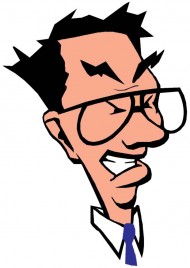Lifting in the warehouse equates typically with forklift trucks and varieties of stacker cranes but there are many other lifting devices not typically sold by forklift dealers and automated materials handling specialists.These can include mobile floor cranes, scissor lifts, goods lifts, overhead cranes and forklift attachments like lifting booms. They all need careful observation of the legal requirements of PUWER and LOLER even if they are not frequently used. So in large establishments where a wide variety of mechanical handling equipment is used how best should one control that?
 Trying to keep track of all the after-sales maintenance schedules of many different lifting equipment machines can be an administrative nightmare and so it makes sense to consider handing the whole show over to one source but such sources are relatively rare because they must be competent and big enough to offer multi-skilled expertise nationwide.
Trying to keep track of all the after-sales maintenance schedules of many different lifting equipment machines can be an administrative nightmare and so it makes sense to consider handing the whole show over to one source but such sources are relatively rare because they must be competent and big enough to offer multi-skilled expertise nationwide.
Britain’s biggest independent forklift dealer, Briggs Equipment, has recognised that the changing requirements of manufacturing, logistics and distribution businesses mean that the most cost-effective MH solutions now comprise a mix of equipment, and with the growing demand for flexibility materials handling is no longer a question of supplying a few forklift trucks. These days, says Briggs marketing manager, Sally Baker, customers are looking for a complete solution that will satisfy their particular needs that includes after-sales servicing and maintenance to offer added value, preferably from the source’s short and long-term hire fleet.
If currently doing your own servicing of multifaceted handling devices then consider the administrative pain of ensuring that the regular inspection and servicing regimes are followed to the letter and also the need to avoid the snares. If using an electric truck and hydraulic attachment, for example, one must be careful over improper specification or fitting of the attachment because it could reduce the battery operating time by up to half. It is essential that powerful attachments are supported by precisely tuned hydraulics and powered by batteries of adequate capacity.
When using lifting attachments infrequently it is easy to overlook them at inspection times, which may require more frequent checks than their host trucks and which may not always be included as part of the truck’s Thorough Examination. Non permanently fixed attachments, including booms and cranes, must be inspected by a competent person at least twice a year. The HSE requires that lifting accessories should be stored in a storage rack or container that prevents rusting, rotting or deterioration from chemicals or rodent attack.
Handing all these worries over to a professional, one-source partner will, or should, remove any risk of legal requirements being ignored or missed. There are potentially other significant gains to be had from a thoroughly-experienced MH supplier partner who goes out of their way to commit to understanding their customers’ business, which involves conducting site visits and carrying out in-depth assessments to determine the best type of equipment for the environment before proposing a solution. For example, sometimes goods lifts to mezzanines can be a more cost-effective and safer method than a reach truck, which needs much more space to manoeuvre on ground level and a second operative to remove, say, roll containers by pallet tuck on the mezzanine.
Another problematic example is with loading bays without raised docks, currently reliant on spacehungry, internally used yard ramps. A pit-installed scissor lift could be the answer if more desperately needed space is to be had.
So a multi-skilled, nationwide, independent MH partner can be far more valuable than just removing all the headaches of after-sales truck and other kit care. They can provide just the right mix of the most appropriate kit tailored to individual clients, and there are rarely two or more clients whose needs are exactly the same.




Comments are closed.